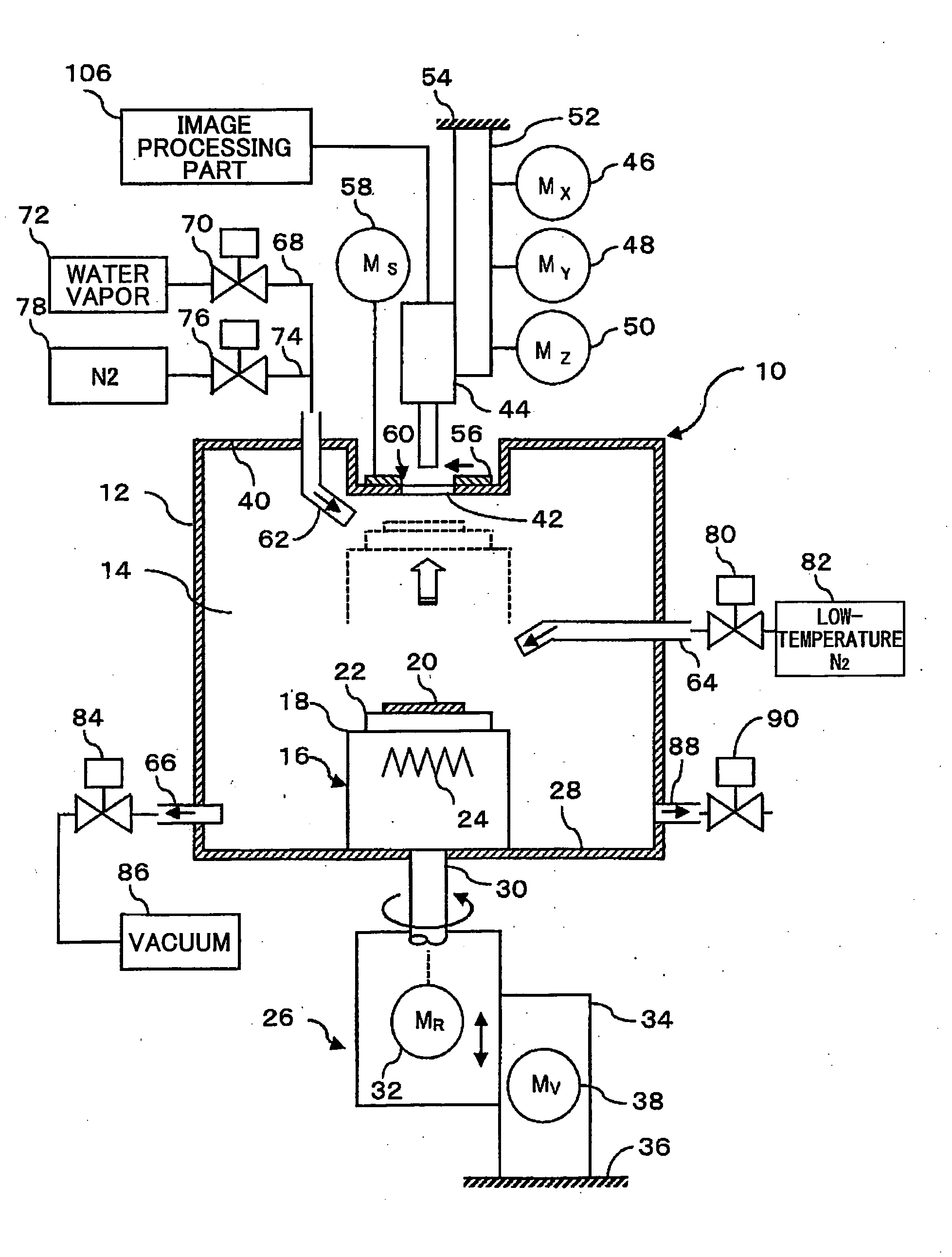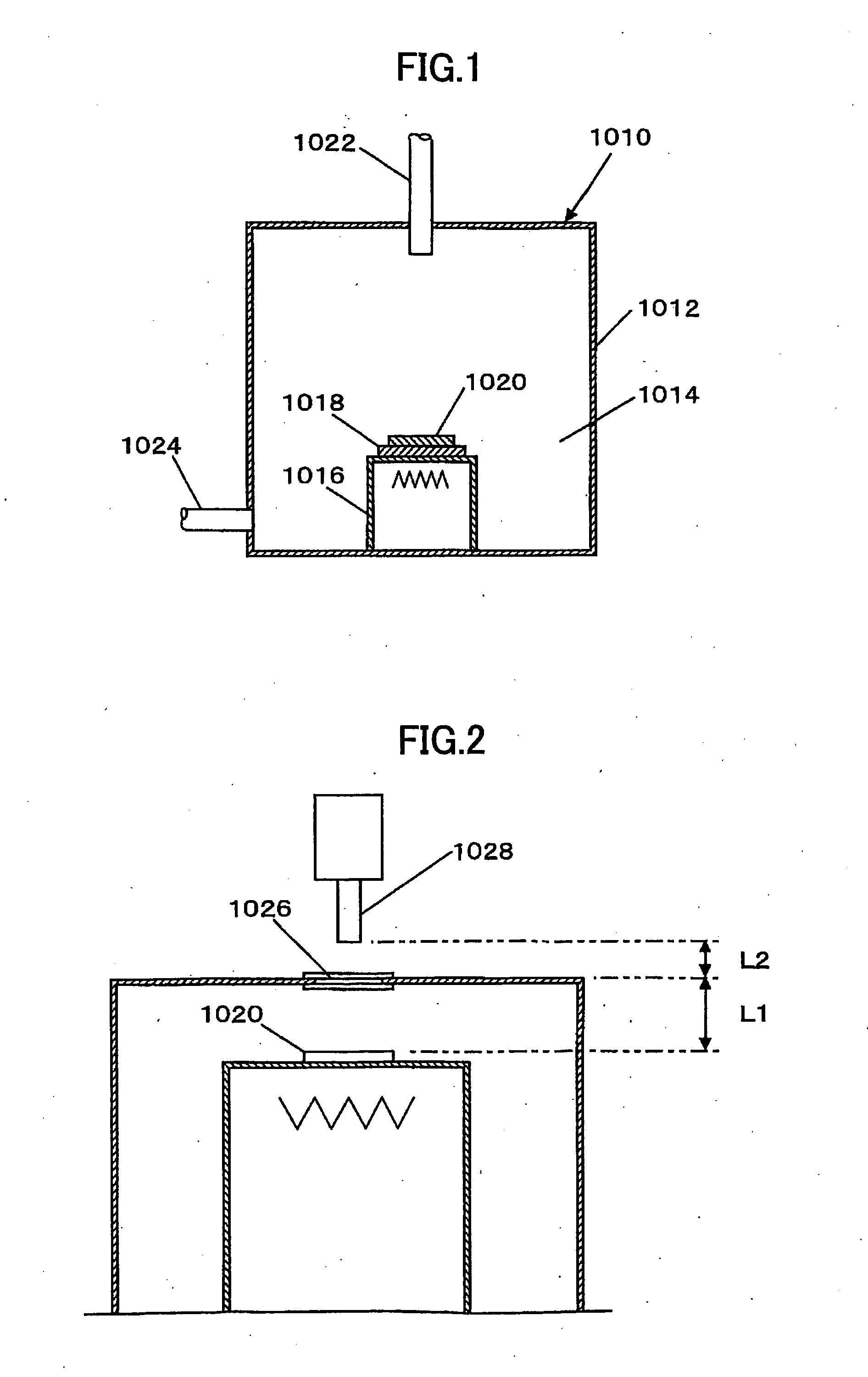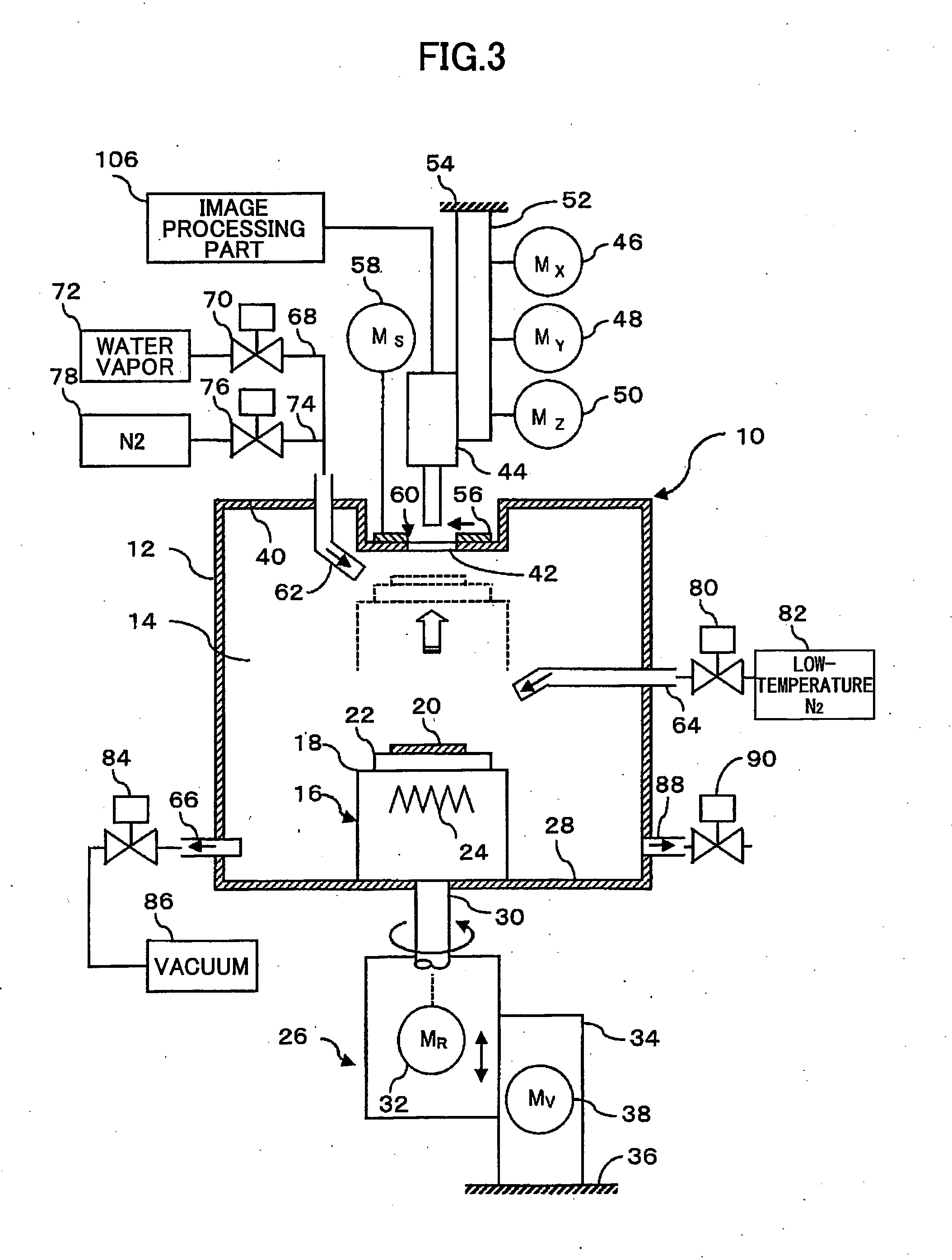Semiconductor Oxidation Apparatus and Method of Producing Semiconductor Element
a technology of oxidation apparatus and semiconductor element, which is applied in the direction of semiconductor/solid-state device testing/measurement, gas-gas reaction process, instruments, etc., can solve the problems of affecting the amount of oxidation of semiconductor sample b>1020/b>, yield deterioration, etc., to achieve accurate monitoring, control the amount of oxidation, and uniform characteristics
- Summary
- Abstract
- Description
- Claims
- Application Information
AI Technical Summary
Benefits of technology
Problems solved by technology
Method used
Image
Examples
first embodiment
[0038]FIG. 3 is a cross sectional view showing a structure of a first embodiment of the semiconductor oxidation apparatus according to the present invention in a vertical cross section. A semiconductor oxidation apparatus (hereinafter simply referred to as an oxidation apparatus) 10 shown in FIG. 3 has a pressure-tight sealable container (or oxidation chamber) 12 made of a metal such as stainless steel. An internal space 14 having a predetermined size is provided within the oxidation chamber 12, and a base 16 for supporting a semiconductor sample is provided at the bottom of the internal space 14.
[0039]In this embodiment, the base 16 is made up of a heating table 18, and a sample table (or substrate holder) 22 that is provided on the heating table 18 and is designed to support thereon a semiconductor sample (substrate made of semiconductor wafer) 20 that is to be oxidized. The heating table 18 has an electric heater 24 for heating the semiconductor sample 20 that is to be oxidized, ...
second embodiment
[0078]FIG. 15 is a cross sectional view showing a structure of a VCSEL produced by a second embodiment of the present invention. A VCSEL 300 shown in FIG. 15 outputs a laser oscillation having a wavelength of 780 nm, and has an n-(100)GaAs substrate 302 having an inclination angle of 2° in a direction of the face orientation. An n-Al0.9Ga0.1As layer and an n-Al0.3Ga0.7As layer are alternately stacked for 35.5 periods on the substrate 302, to form a periodic structure having a thickness that is ¼ the oscillation wavelength within the medium and forming an n-semiconductor distributed Bragg reflection mirror (hereinafter referred to as a first reflection mirror or simply n-DBR mirror) 304. Between two mutually adjacent n-Al0.9Ga0.1As and n-Al0.3Ga0.7As layers, there is inserted a composition inclined layer (not shown) having a thickness of 20 nm and in which the Al composition gradually changes from the Al composition of the n-Al0.9Ga0.1As layer to the Al composition of the n-Al0.3Ga0...
PUM
 Login to View More
Login to View More Abstract
Description
Claims
Application Information
 Login to View More
Login to View More - R&D
- Intellectual Property
- Life Sciences
- Materials
- Tech Scout
- Unparalleled Data Quality
- Higher Quality Content
- 60% Fewer Hallucinations
Browse by: Latest US Patents, China's latest patents, Technical Efficacy Thesaurus, Application Domain, Technology Topic, Popular Technical Reports.
© 2025 PatSnap. All rights reserved.Legal|Privacy policy|Modern Slavery Act Transparency Statement|Sitemap|About US| Contact US: help@patsnap.com



